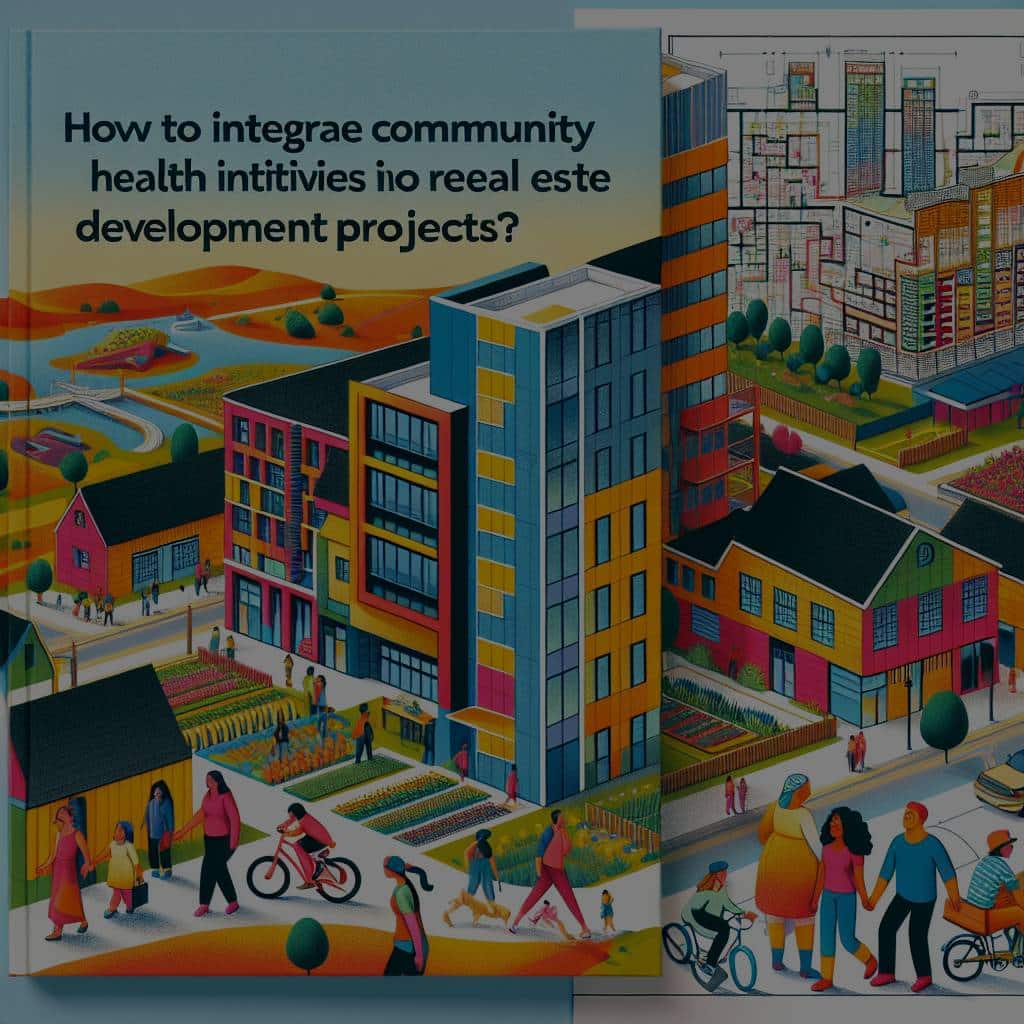How to Integrate Community Health Initiatives into Real Estate Development Projects?

In our modern society, there’s a growing recognition of the intrinsic connection between the built environment and public health. The design of our cities and communities can significantly impact the wellness and physical well-being of the people who live there. This article will explore ways to integrate health initiatives into real estate development projects, considering the design and analysis of physical spaces, the engagement of the local community, and the role of public and private services.
Assessing the Current Situation
Before embarking on any major project, it’s crucial to have a clear understanding of the current situation. This involves a thorough analysis of the local community, the real estate market, and the health landscape.
A découvrir également : What Strategies Can Help Maximize Land Value in Real Estate Development?
In terms of community analysis, consider factors like population demographics, economic conditions, and local culture. What are the major health issues in the community? Are there disparities in health outcomes between different groups? What are the community’s strengths and assets that can be built upon?
Next, a comprehensive real estate analysis is necessary. Examine the local market conditions, including the supply and demand for different types of properties. Identify any gaps in the market that your development could fill.
Avez-vous vu cela : What Are the Considerations for Developing Real Estate in Tornado-Prone Areas?
Finally, the health landscape analysis involves understanding the existing health services in the area, as well as any health initiatives currently in place. You’ll need to know what services are available, who provides them, and how they’re funded.
Incorporating Health into Design
A key aspect of integrating health initiatives into real estate projects is through thoughtful design. The physical environment can significantly influence wellness. For instance, walkable neighborhoods with ample green spaces can encourage physical activity and social interaction, leading to improved mental and physical health.
Incorporating health into design starts at the planning stage. Design considerations could include ensuring accessibility for people of all ages and abilities, incorporating active transportation infrastructure such as bike lanes and pedestrian pathways, and providing green spaces for relaxation and recreation. Additionally, consider the location and orientation of buildings to maximize natural light and ventilation, which can improve indoor air quality and reduce energy consumption.
Furthermore, the design of interior spaces is also important. Consider implementing wellness design principles, such as ergonomic workspaces, biophilic elements like natural materials and indoor plants, and spaces for relaxation and socializing.
Engaging the Community
Community engagement is an essential part of any real estate development project, and especially so when health initiatives are involved. Engaging the community ensures the project’s relevance and acceptability, and can also leverage local knowledge and resources.
Start by identifying and reaching out to key stakeholders in the community – this could include local government, health organizations, community groups, and residents. Involve them in the planning process, seeking their input on community needs, project design, and potential health initiatives.
Next, consider ways to foster ongoing engagement throughout the development and beyond. This could include regular community meetings, updates, and opportunities for feedback. You might also consider establishing community governance structures, such as a residents’ committee, to ensure the community’s ongoing involvement and ownership of the project.
Partnering with Public and Private Services
The final piece of the puzzle is partnering with public and private services to deliver health initiatives. This could involve partnering with local health organizations to provide health services within the development, or collaborating with local government on public health initiatives.
For instance, you might work with a local health clinic to establish a satellite clinic within the development, providing convenient access to health services for residents. Or, you might collaborate with the local council on a public health campaign focused on healthy eating, physical activity, or mental health.
Remember, integrating health initiatives into a real estate development is not just about the physical environment – it’s also about the services and supports available to residents. By partnering with public and private services, you can ensure these supports are in place.
Integrating health initiatives into real estate development projects is a complex but rewarding process. By assessing the current situation, incorporating health into design, engaging the community, and partnering with public and private services, you can create a development that not only meets housing needs but also contributes to the overall wellness of the community.
Navigating Approval Process
Negotiating the approval process is a critical aspect of any real estate project. When incorporating health initiatives, this process can become more complex due to the addition of new stakeholders and the need to meet various health and safety regulations.
Initially, start with understanding the local regulations and codes. This includes zoning laws, building codes, and any health-focused policies that might influence your project. It’s important to liaise with relevant government departments like the health department, planning department, and local council for guidance and to ensure compliance.
Next, engage in evidence-based planning. Use data from your situation analysis to build a strong case for your project and its health initiatives. Show how your project addresses identified health needs, contributes to health equity, and aligns with broader community and economic development goals. This evidence will be crucial in obtaining approvals and securing support from stakeholders.
In complex projects, consider engaging a project facilitator or navigator. This person can help guide you through the approval process, coordinate between different stakeholders, and ensure a smooth project timeline. They can also be instrumental in resolving any conflicts or issues that arise, ensuring the project maintains its focus on health and wellness.
Lastly, maintain transparent and regular communication throughout the approval process. Keep all stakeholders informed about progress, setbacks, and changes. This openness not only builds trust but also ensures everyone is on the same page, reducing the likelihood of misunderstandings or conflicts.
Evaluating and Adapting Projects
Once a real estate project is launched, continuous evaluation is key to ensure the health initiatives are achieving their intended outcomes. This involves monitoring indicators related to health, engagement, and the built environment to assess the project’s impact.
Key metrics might include levels of physical activity, mental health outcomes, use of community spaces, and resident satisfaction. Collect this data regularly and compare it against baseline measures to track changes over time.
Feedback from community members is also vital. Regular surveys, meetings, or focus groups can provide valuable insights into residents’ experiences and perceptions. Use this feedback to make ongoing adjustments to the project, ensuring it remains relevant and responsive to community needs.
Moreover, ongoing evaluation provides evidence of the project’s impact, which can be used to secure funding, gain approvals for future projects, and advocate for the integration of health initiatives into other real estate developments.
In conclusion, integrating community health initiatives into real estate development projects is a multifaceted process. It involves a detailed understanding of the current health and real estate situation, thoughtful design, community engagement, partnerships with public and private services, navigating complex approval processes, and continuous evaluation. By doing so, real estate developers can contribute to community health, foster health equity, and create environments that not only accommodate residents but also promote wellness. Remember, real estate development is not just about buildings – it’s about building healthier communities.
